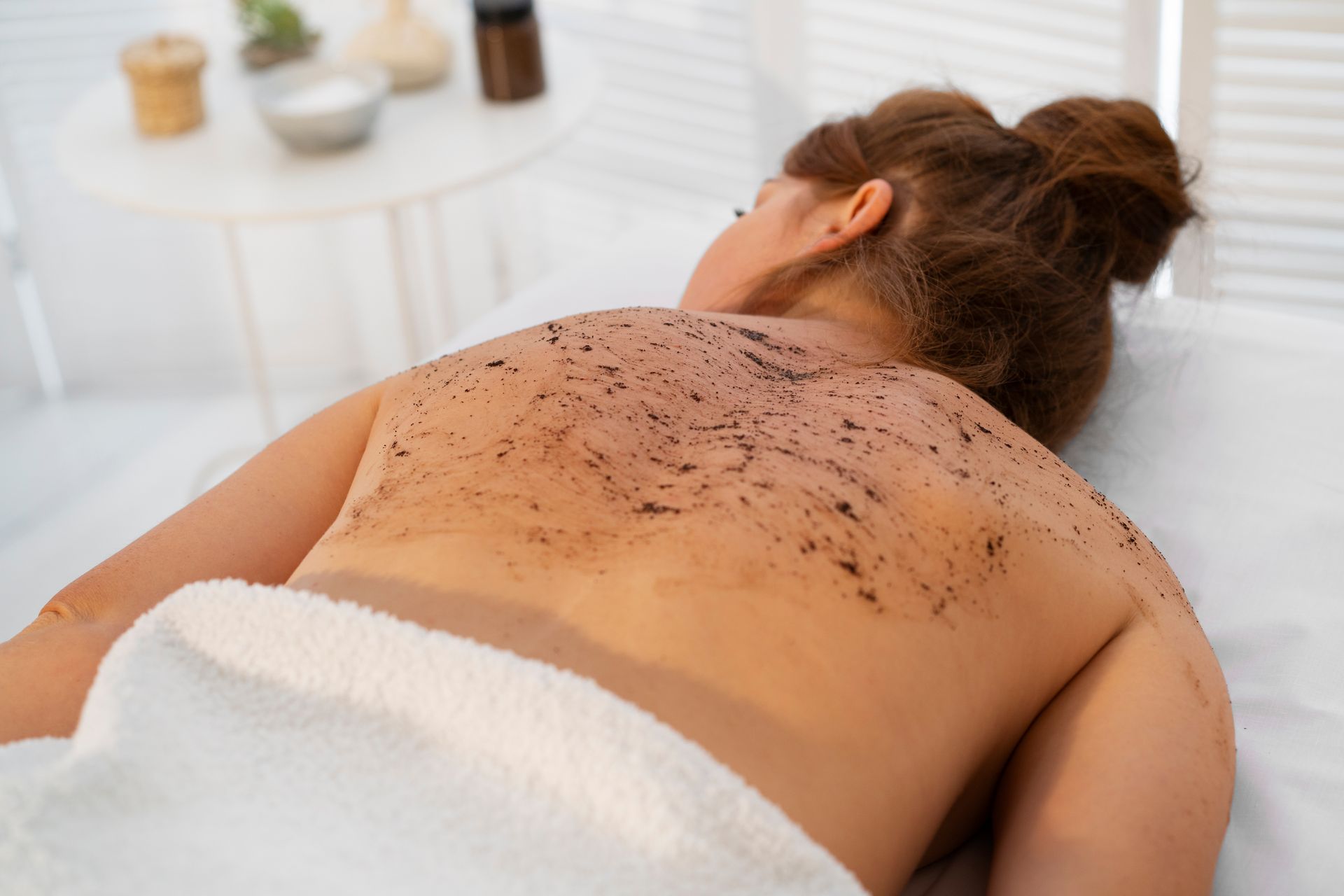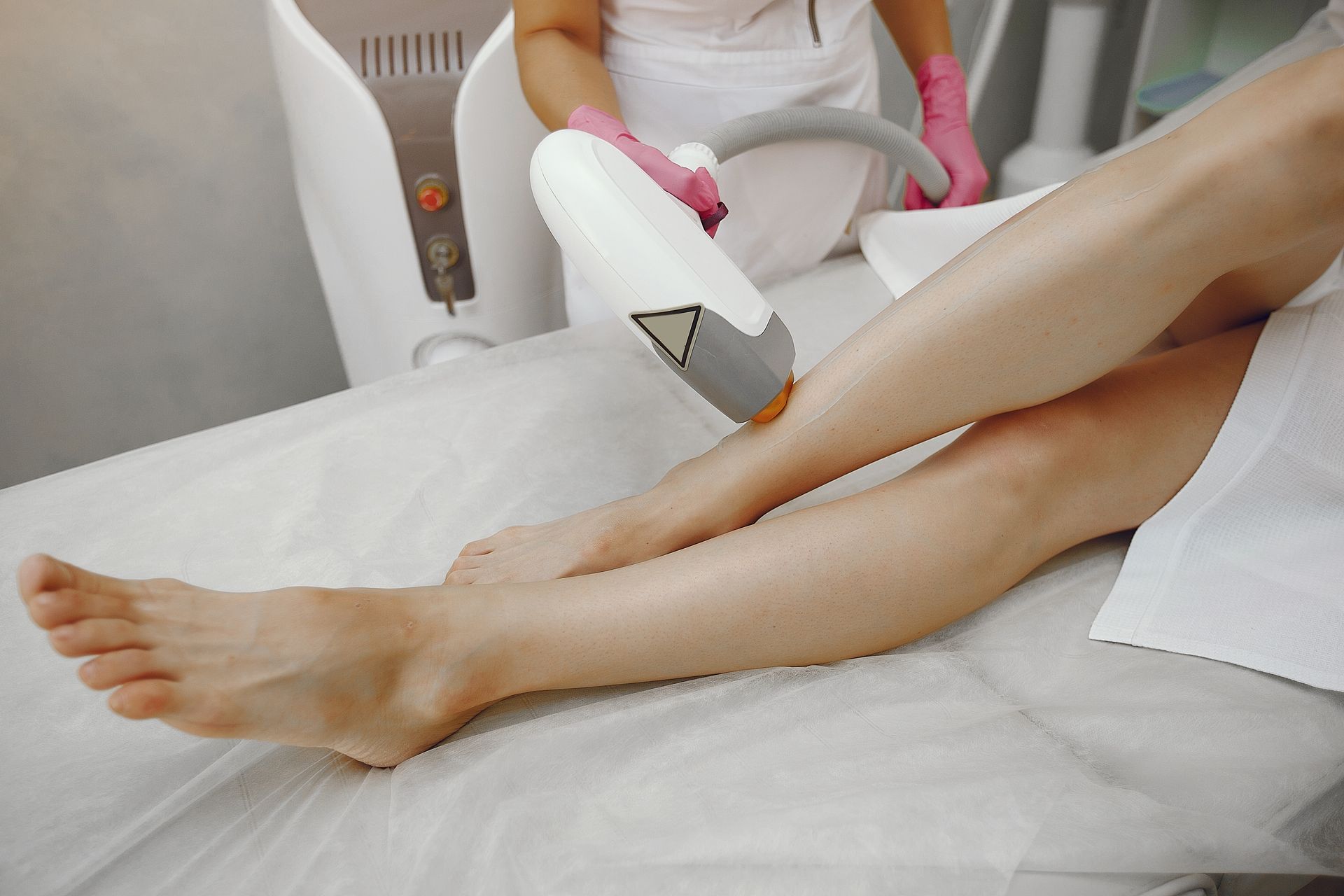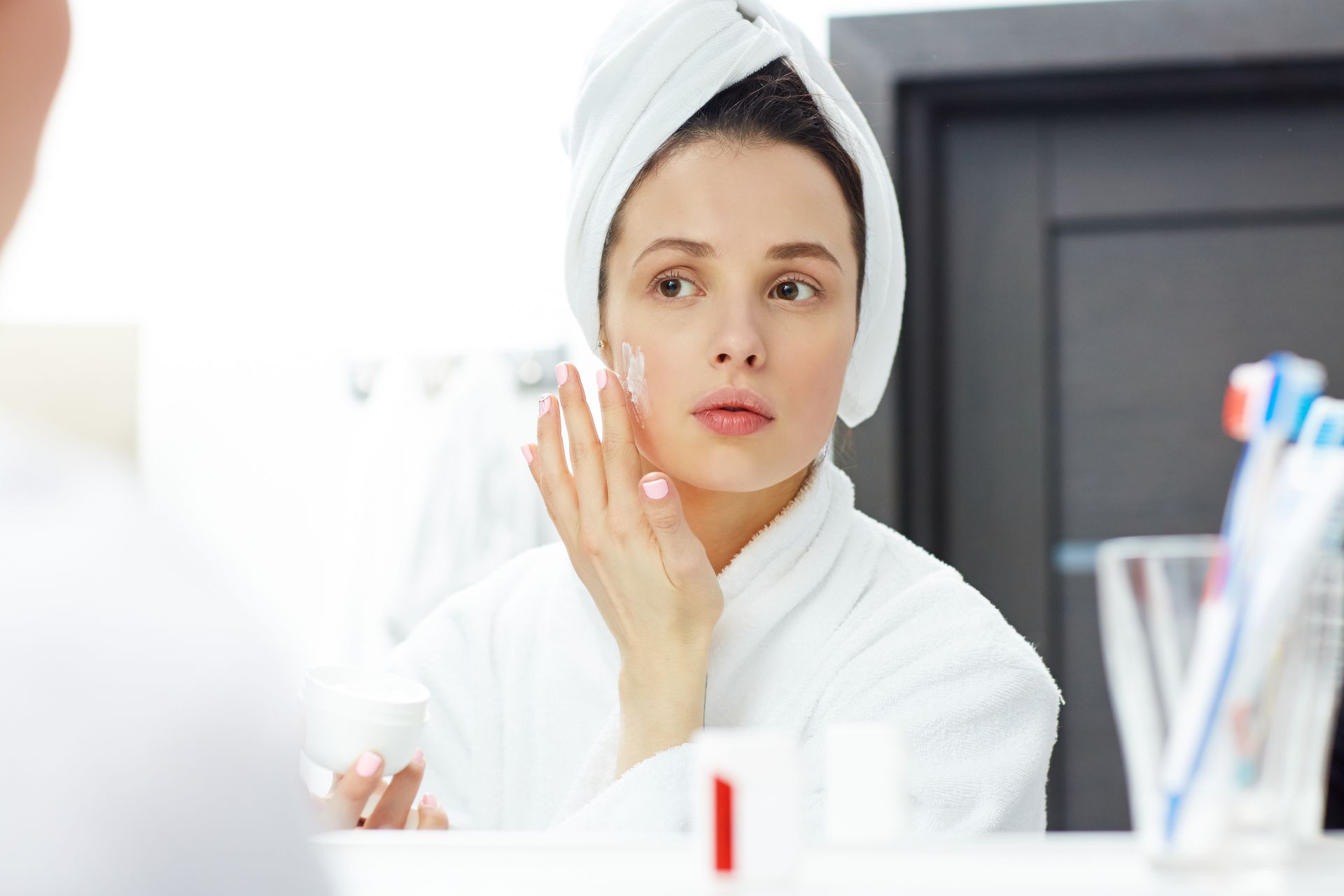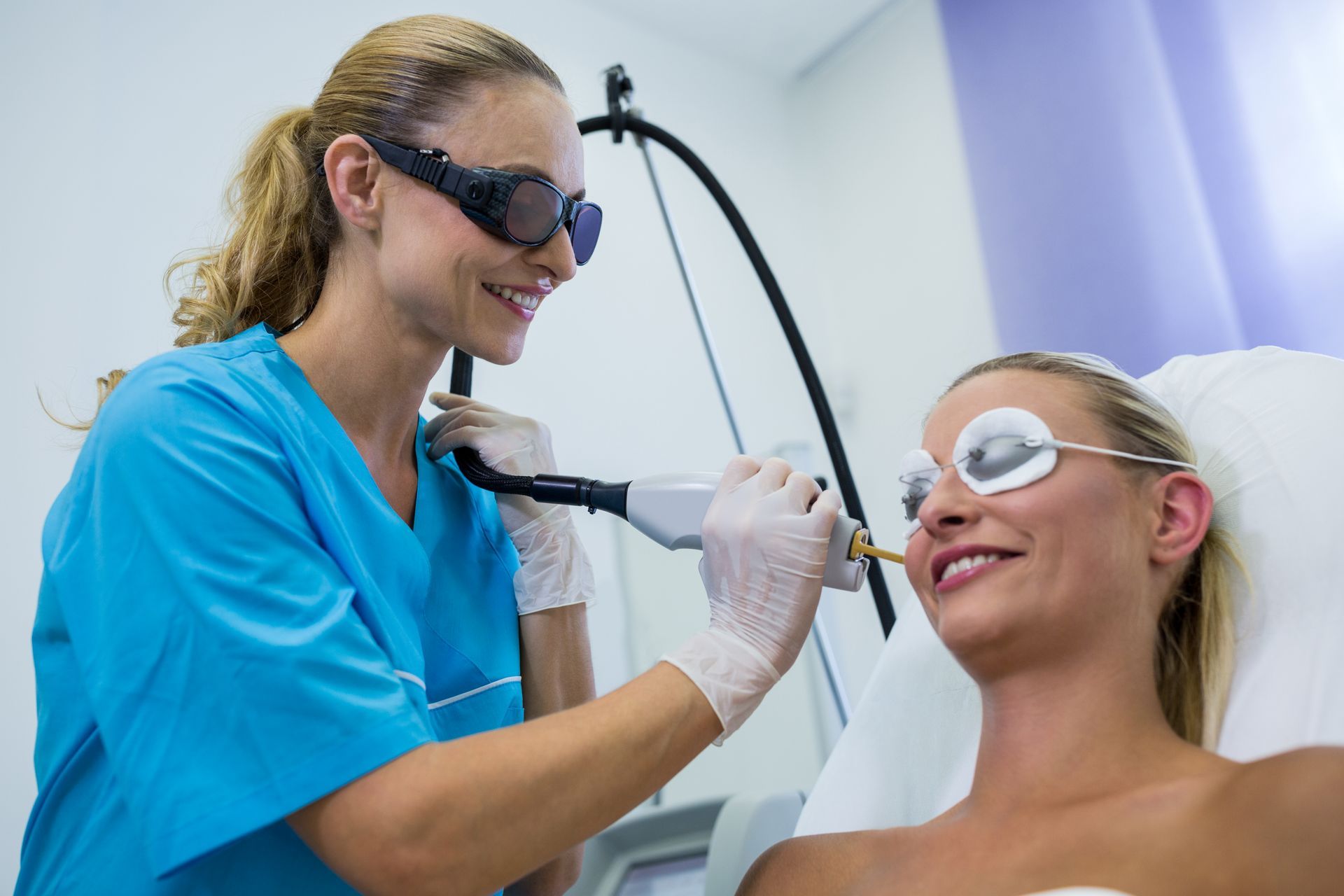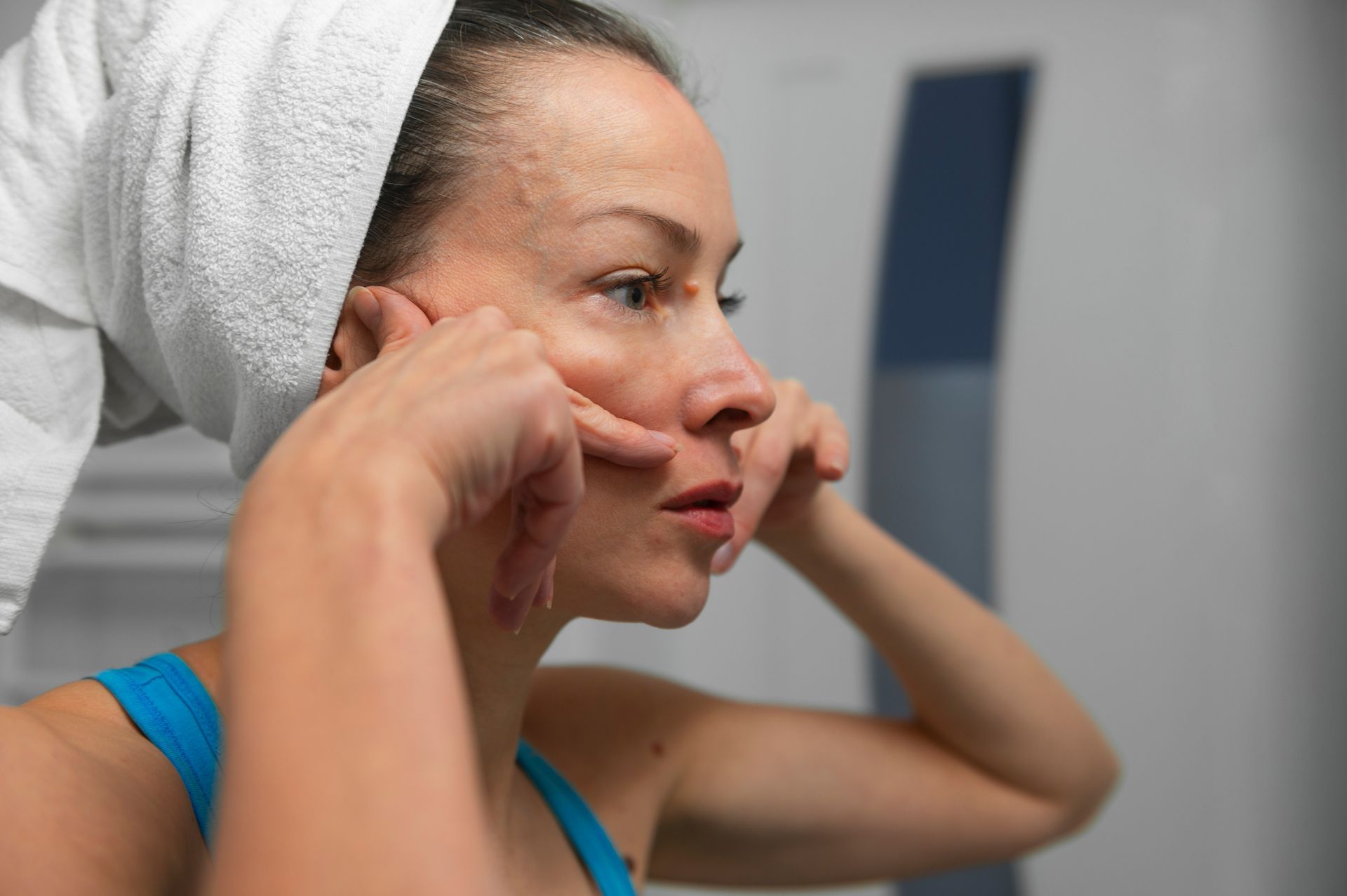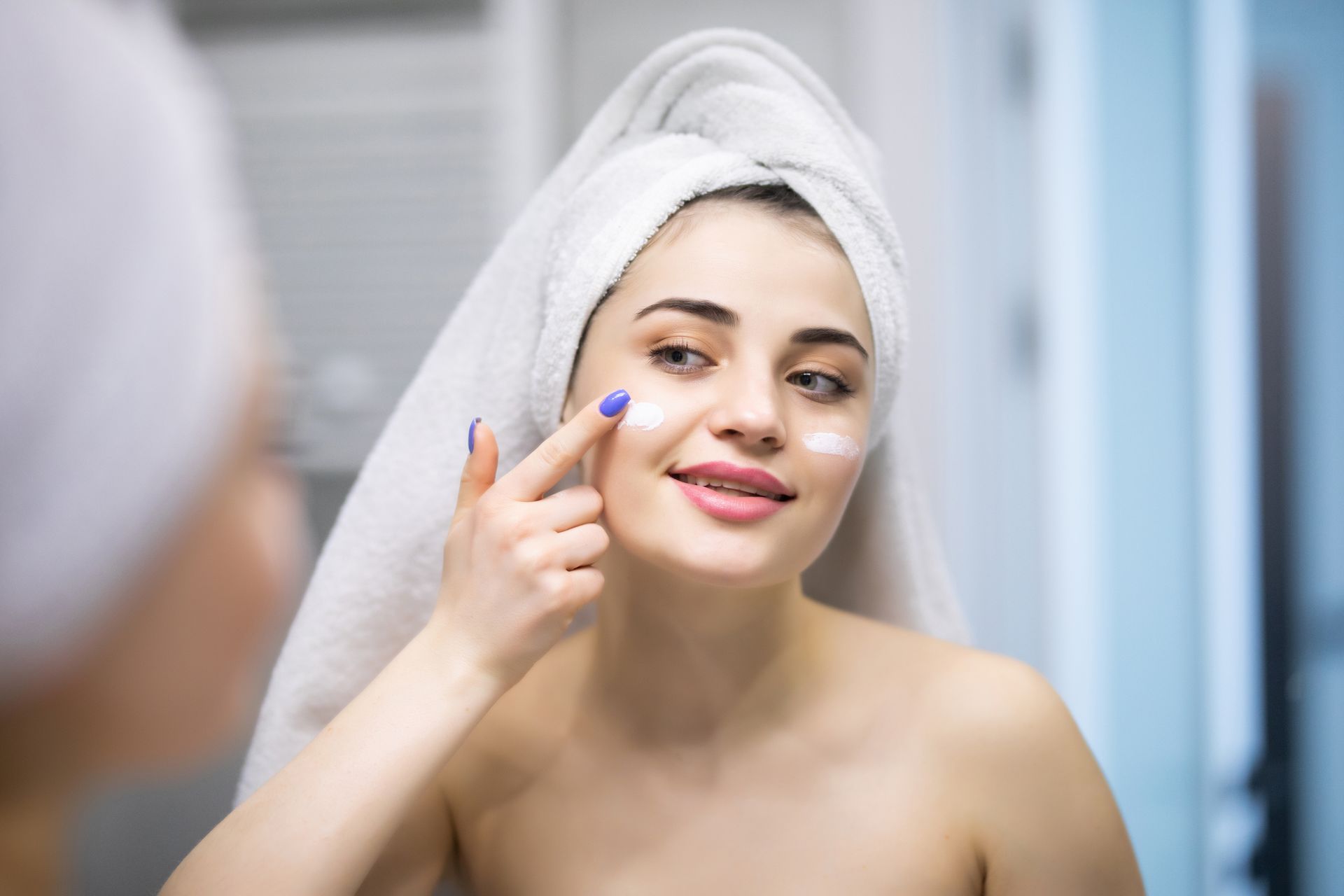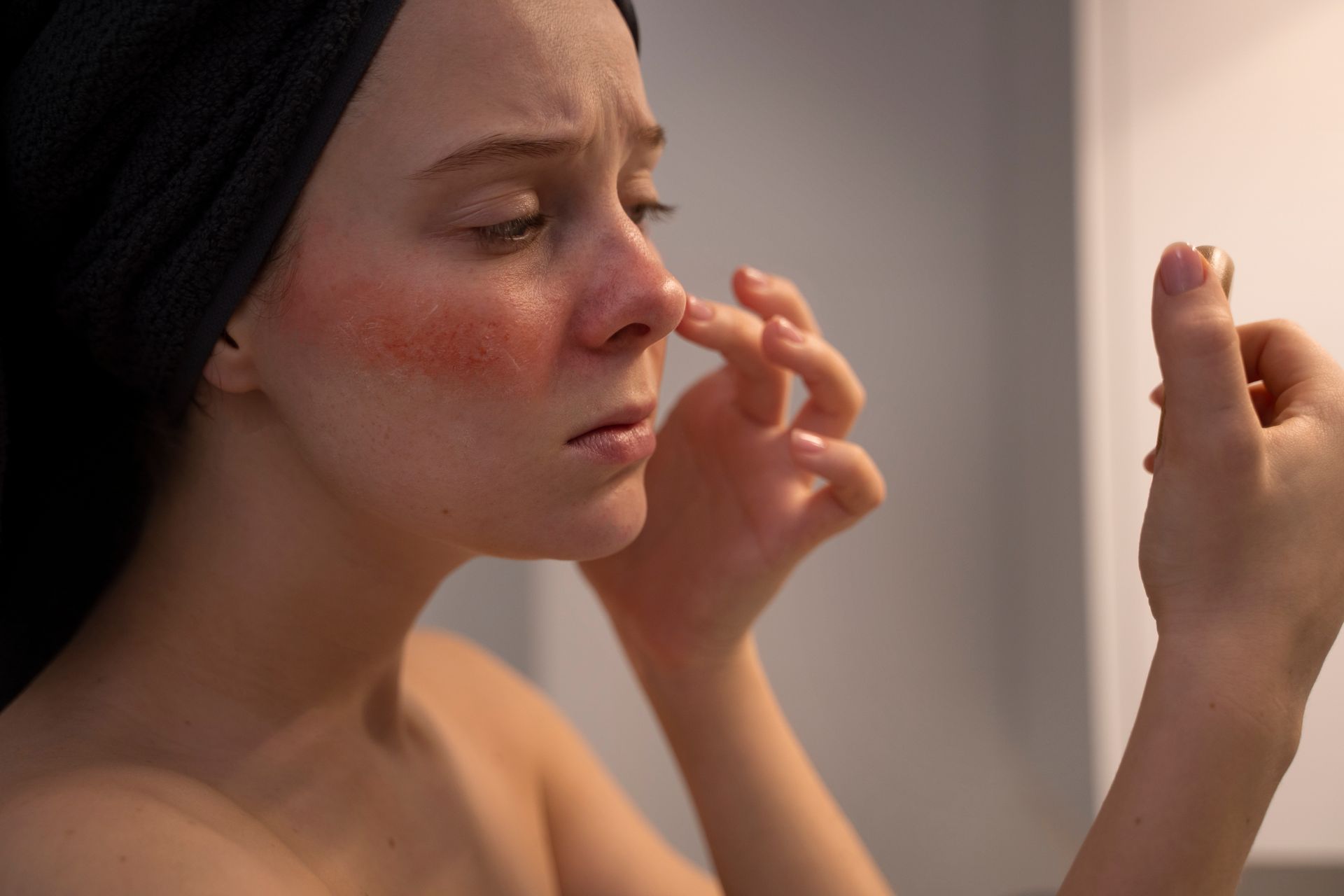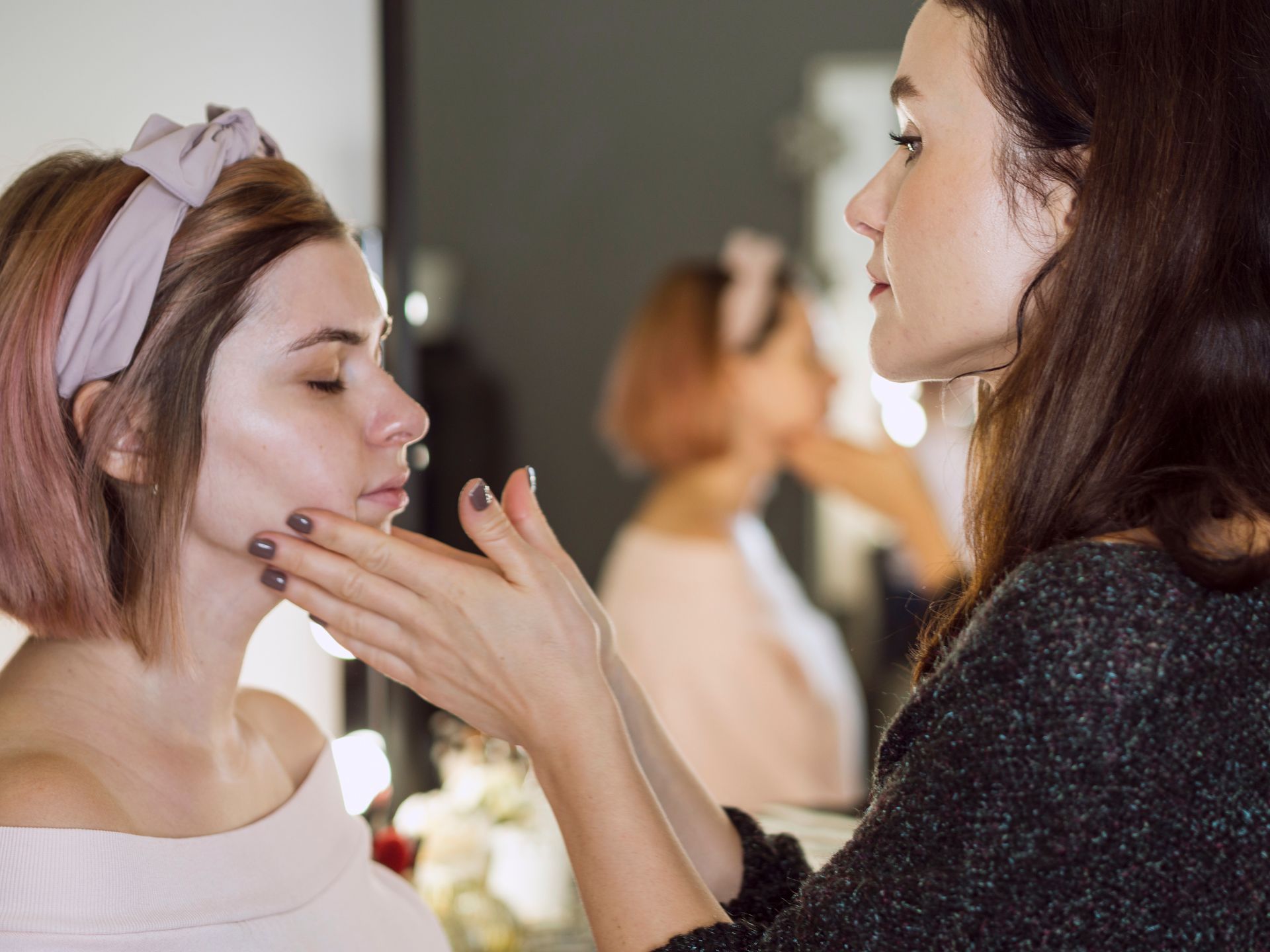The Ultimate Tanning & Laser Hair Removal Handbook
Our quest for beauty and confidence often leaves us overwhelmed by the choices available in skincare and aesthetics. The desire for radiant, hair-free skin and that perfect sun-kissed glow has led many on a journey filled with questions and decisions. This handbook serves as your trusted compass, providing a comprehensive roadmap to achieving your beauty goals.
Tanning, with its promise of a healthy, sun-bronzed complexion, has long captured our imaginations. Meanwhile,
laser hair removal stands as a revolutionary approach to
smooth, hair-free skin. Both offer unique advantages, yet the compatibility and interplay between these two worlds often remain a mystery. That's where this guide comes in, shedding light on the intricacies of combining these treatments while ensuring the health and vitality of your skin.
You will discover how to improve your skincare journey whether you're a beauty enthusiast, a first-time explorer, or someone seeking to optimize your skincare routine. We're here to unravel the mysteries, clear the path, and guide you toward the confident and beautiful you that you aspire to be. So, let's get started, and discover the harmonious blend of tanning and laser hair removal for a more radiant and confident you. Laser hair removal and tanning should not be combined; avoid tanning before and after laser hair removal to prevent skin irritation and ensure the best results.
Learn About Laser Hair Removal
Laser hair removal is a non-invasive cosmetic procedure that has gained immense popularity for its efficiency and long-lasting results. At its core, the treatment is designed to target and remove unwanted hair by utilizing the power of concentrated light, or laser, to precisely target hair follicles.
Themagic of laser hair removal lies in its ability to target the melanin, or pigment, in hair follicles. When the laser emits a specific wavelength of light, it's absorbed by the melanin in the hair, which then transforms into heat. This heat damages the hair follicle, inhibiting its ability to grow hair in the future. The surrounding skin remains undamaged, making it a safe and effective method for hair reduction.
There are various types of laser hair removal devices available, each with its unique features and advantages. Common types include Alexandrite, Diode, Nd:YAG, and IPL (Intense Pulsed Light) devices. The choice of device often depends on your skin type and hair color, as well as the treatment area.
The Science Behind the Treatment
Laser hair removal is grounded in scientific principles, primarily involving selective photothermolysis. This sophisticated term refers to the precise targeting of hair follicles through a combination of light and heat energy. The science ensures minimal damage to the surrounding skin while effectivelyreducing hair growth. The allure of laser hair removal extends beyond the promise of hair reduction. The treatment offers several significant advantages, including:
Permanent Hair Reduction:While it's essential to clarify that laser hair removal doesn't guarantee complete hair removal, it does provide a significant andlong-term reduction in hair growth.
Precision and Effectiveness: Laser hair removal is highly precise, allowing for the targeted removal of hair without affecting the surrounding skin. This precision makes itsuitable for various body areas, including the face, underarms, legs, and bikini line.
Minimized Skin Irritation:Unliketraditional hair removal methods like waxing or shaving, laser hair removal minimizes skin irritation, ingrown hairs, and razor burns, leaving your skin smoother and more comfortable.
The World of Tanning
The pursuit of a sun-kissed glow has captivated beauty enthusiasts for generations. Tanning is a diverse world with multiple methods and options for achieving that desired bronzed complexion. Let's explore the most common methods:
Sun Tanning:Sun tanning is perhaps the most traditional and natural method. It involves exposing your skin to natural sunlight, either outdoors or indoors in a controlled setting. This method offers a sense of relaxation and a genuine connection with nature.
Spray Tanning:Spray tanning is a modern and efficient alternative. It entails applying a fine mist of tanning solution to the skin, providing an even and customizable tan. This method is often chosen for its convenience and the ability to achieve a tan without UV exposure.
Tanning Beds:Tanning beds, or sunbeds, utilize UV lamps to stimulate melanin production in the skin. This method allows for precise control over exposure time and intensity. Tanning beds are often chosen for their ability to provide a tan regardless of external weather conditions.
The allure of a sun-kissed glow is undeniable. A tan is often associated with health, vitality, and a radiant appearance. It can boost one's confidence and provide a desirable aesthetic that complements a variety of fashion choices. Tanning offers several benefits beyond its aesthetic appeal, including:
- Exposure to sunlight is a natural way to promote the synthesis of vitamin D in the body, which is crucial for bone health and overall well-being.
- Sunlight and the resulting tan can trigger the release of endorphins, often referred to as "feel-good" hormones, promoting a positive mood.
- A tan can create the illusion of smoother and more even skin tone, concealing blemishes and imperfections.
Laser Hair Removal vs. Tanning
Laser hair removal and tanning are both popular beauty treatments, but they often pose a compatibility challenge when used together.
Skin Sensitivity:One of the primary challenges of combining laser hair removal and tanning is that both proceduresaffect the skin. Laser hair removal targets the hair follicles, while tanning exposes the skin to UV radiation. If you've recently tanned or have a sunburn, your skin may be more sensitive, making the laser hair removal procedure less comfortable and potentially increasing the risk of side effects like redness or blistering.
Risk of Hyperpigmentation:Tanning can lead to increased pigmentation in the skin, and this can interfere with the effectiveness of laser hair removal. Laser treatments work by targeting the melanin in the hair follicles, and increased melanin in the surrounding skin can cause the laser to unintentionally target the skin, potentially leading to hyperpigmentation or burns.
Inconsistent Results: Combining these treatments without proper planning can lead to inconsistent results. Tanning can cause your skin tone to fluctuate, making it challenging for the laser to accurately target the hair follicles.
Considerations for Combining Treatments
- To avoid the compatibility challenges, plan your treatments carefully. It's generally recommended to avoid tanning, both natural and artificial, for at least four weeks before and after alaser hair removal session. This allows your skin to return to its natural state, reducing the risk of hyperpigmentation and discomfort during the procedure.
- If you must be in the sun, use a broad-spectrum sunscreen with a high SPF to protect your skin. Sunscreen can help prevent skin damage and reduce the risk of pigmentation changes.
- Consult with a qualified dermatologist orlaser hair removal specialist to discuss your specific situation. They can provide personalized advice and guidance on how to safely combine these treatments.
Planning Your Aesthetic Journey
In the context of beauty procedures, emphasizing safety is of utmost importance. Taking the necessary precautions and being patient are essential to ensure the best outcomes for your skin and aesthetics. Before embarking on a multifaceted aesthetic journey, it's advisable to seek consultation with experts in the field who can assess your skin type, goals, and preferences. They will design a customized plan that not only optimizes results but also minimizes potential risks. Understanding that both laser hair removal and tanning demand ongoing maintenance is key. Laser hair removal often involves multiple sessions for desired results, and tanning requires regular touch-ups, so it's crucial to incorporate these requirements into your long-term aesthetic journey.
Laser hair removal and tanning can be part of your beauty routine, but they need to be carefully coordinated to avoid compatibility issues and achieve the best results. By considering timing, skin protection, and consulting with professionals, you can plan your aesthetic journey effectively and safely. Always prioritize your skin's health and well-being throughout the process.
Preparing for Laser Hair Removal
Before starting your laser hair removal journey, it is essential to begin with a consultation with a qualified practitioner. During this consultation, your practitioner will assess your skin type and hair color to determine the most suitable treatment plan for you. This initial step is essential for achieving effective and safe results.
Toprepare for laser hair removal, it's crucial to avoid sun exposure for at least four weeks before your scheduled session. Sun exposure can make your skin more sensitive, increasing therisk of side effects likeburns or hyperpigmentation.
Shaving the area to be treated a day or two before your appointment is recommended. Shaving guarantees that the laser's energy is directed at the hair follicles beneath the skin rather than the hair on the surface. However, it's important to refrain fromwaxing or plucking the hairs, as this would remove the follicles of the laser targets.
Maintaining clean skin is another critical aspect of pre-laser hair removal preparation. Ensure the treatment area is free from lotions, creams, or makeup, as clean skin allows the laser to penetrate more effectively.
Avoid using tanning products or sprays before your laser session, as these can increase skin sensitivity and lead to undesirable results.
Tanning Session Preparation
When preparing for a tanning session, exfoliation is key. Exfoliating your skin before tanning removes dead cells, creating a smoother surface for the tanning product to be applied evenly. After exfoliating, it's important to moisturize your skin to maintain its health and ensure a uniform tan.
You should carefully consider the tanning method that best suits your skin type and preferences. Options include spray tans, self-tanning lotions, or sunbeds. Research these methods to determine which one aligns with your needs and expectations.
Combining Tanning and Laser Hair Removal
When combining tanning and laser hair removal in your beauty regimen, careful planning and consideration of timing are essential to achieve the best results while protecting your skin.
To successfully combine these two treatments, you should consider the scheduling of your appointments. It's advisable to space them out with a minimum of four weeks between tanning and laser hair removal. This waiting period allows your skin to recover from the effects of tanning and minimizes the risk of complications during the laser procedure.
Long-term planning is also crucial, as both laser hair removal and tanning typically require multiple sessions to achieve the desired results. Ensure that your schedule accommodates these ongoing appointments. If you're unsure about the ideal schedule, seeking advice from dermatologists or aesthetic professionals can help you create a customized timetable that aligns with your goals.
Dealing with Tan Lines
Combining tanning and laser hair removal can be challenging when dealing with tan lines. To address this concern, consider the following:
- Adjust your tanning style to minimize tan lines. For instance, if you have noticeable bikini tan lines, consider starting laser hair removal in these areas first and then adjust your tanning method to gradually fade the lines.
- Sunless tanning products, such as lotions or sprays, can help disguise or even out tan lines. These products offer a temporary solution while you work on gradually blending the lines through natural tanning or other methods.
Protecting Your Skin
Both tanning and laser hair removal can impact your skin. To protect your skin and maintain its health:
- Always use sunscreen with a high SPF when tanning outdoors or using a sunbed. This safeguards your skin from harmful UV rays, preventing sunburn and skin damage.
- After your laser hair removal sessions, follow the post-treatment care guidelines provided by your practitioner. This may include using soothing creams and avoiding direct sun exposure for a specified period.
- Keep your skin well-hydrated and moisturized. Proper hydration makes your skin more resilient and less prone to irritation before and after treatments.
Conclusion
In the pursuit of aesthetic perfection, the combination of tanning and laser hair removal necessitates careful planning, professional guidance, and dedicated post-treatment care. As you journey towards achieving your beauty goals, maintaining a balanced schedule, seeking expert advice, and safeguarding your skin become paramount. By embracing these principles, you can confidently enhance your appearance, ensuring that your beauty journey is not only fulfilling but also a testament to your radiant and healthy skin.
BOOK YOUR FREE SESSION
